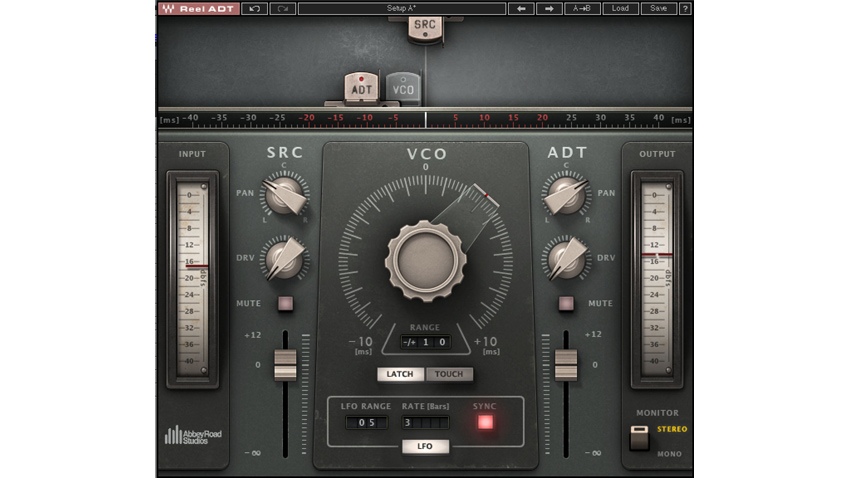NAMM 2014: Waves Abbey Road Reel ADT plugin announced
Designed to give you The Beatles' double-tracked sound in your DAW

NAMM 2014: The Abbey Road name has been associated with various plugins down the years, but Waves is claiming that its new Abbey Road Reel ADT is the first one to emulate the studio's pioneering process of artificial double tracking.
The technique was famously used by The Beatles, and involved connecting the primary tape machine to a second, speed-controlled machine so that two versions of the same signal could be played back simultaneously. The frequency of an oscillator was then gently wobbled to vary the speed of the second tape machine, making it sound like a separate take.
The effect was created by Abbey Road engineer Ken Townsend, and John Lennon is said to have referred to it as "Ken's flanger".
Reel ADT promises to let you achieve the effect quickly and easily, enabling you to advance or delay the doubled signal to achieve delay and pitch variations. You can also drive each of the signals separately to add tape saturation, and there are wow and flutter controls, too.
Specs are below. Waves Abbey Road Reel ADT will be available in native formats only, but we don't yet know its price.
Waves Abbey Road Reel ADT features
- Developed in association with Abbey Road Studios
- Genuine tape-sounding ADT plugin
- For the first time ever, a full exact recall automation of the ADT effect
- Different tape sounds for source and ADT signals
- Exclusive 2-voice component
- Separate drive control for each path
- Manual and automatic control
- MIDI-assignable manual control for the most authentic user experience possible
Get the MusicRadar Newsletter
Want all the hottest music and gear news, reviews, deals, features and more, direct to your inbox? Sign up here.



I’m the Deputy Editor of MusicRadar, having worked on the site since its launch in 2007. I previously spent eight years working on our sister magazine, Computer Music. I’ve been playing the piano, gigging in bands and failing to finish tracks at home for more than 30 years, 24 of which I’ve also spent writing about music and the ever-changing technology used to make it.










